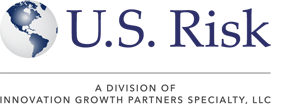 Community Associations vs. Inflation in 2025
Community Associations vs. Inflation in 2025
June 1, 2025
Community associations across the country are feeling the pressure as inflation continues to affect every corner of their operations — from skyrocketing insurance premiums to rising maintenance and labor costs. As budgets tighten… more ▶
 Community Associations vs. Inflation in 2025
Community Associations vs. Inflation in 2025
June 1, 2025
Community associations across the country are feeling the pressure as inflation continues to affect every corner of their operations — from skyrocketing insurance premiums to rising maintenance and labor costs. As budgets tighten and reserve funds stretch thinner, boards and property managers are being forced to make tough decisions, potentially focusing on the types of insurance coverages and amounts of those coverages to manage costs.
To learn more about insurance solutions for community associations, including homeowners’ associations, visit our Community Associations page.
Inflation’s Growing Impact on Community Operations
Over the past year, persistent inflation has driven up the costs of everything from landscaping services to building materials. For many associations, this has led to:
- Higher insurance premiums, particularly for property and liability coverage in disaster-prone regions.
- Increased utility and service expenses, which are difficult to forecast and budget for.
- Pressure on reserve funds, which may no longer meet future replacement needs due to cost overruns.
These financial stressors are compounded by regulatory demands and aging infrastructure, especially in older communities.
What’s Driving Inflation—and Why It Matters for Communities
Inflation is being fueled by several interrelated economic forces, each of which has a direct or indirect effect on community associations:
- Labor shortages and rising wages have made it more expensive to hire vendors for landscaping, janitorial services, security, and property maintenance.
- Supply chain disruptions, stemming from global instability and lingering effects of the COVID-19 pandemic, have increased the cost and lead time for building materials, appliances, and repair parts.
- Energy costs have fluctuated significantly, impacting everything from heating and cooling common areas to fueling maintenance equipment.
- Construction cost inflation has pushed up the price of major capital projects like roof replacements, siding repairs, and infrastructure upgrades.
- Insurance market volatility, especially in areas vulnerable to natural disasters or litigation, has led to double-digit increases in premiums for property and liability coverage.
All these factors contribute to budget stress, making it difficult for associations to keep up with operating expenses, replenish reserves, or avoid unpopular assessment increases.
The Importance of Transparent Budgeting
Community leaders must adopt proactive financial planning strategies to stay ahead of inflationary trends. This includes:
- Conducting updated reserve studies more frequently.
- Working with insurance and financial professionals to anticipate premium hikes.
- Clearly communicating with residents about necessary increases in assessments or special levies.
Transparency builds trust — and is essential when making financial decisions that impact every member of the community.
Leveraging Expert Guidance and Advocacy
Organizations like the Community Associations Institute (CAI) continue to play a critical role by advocating for legislative reforms and offering timely economic analysis. Community leaders are encouraged to stay engaged with national and local chapters to:
- Monitor evolving economic data that may impact financial planning
- Gain access to professional development and tools for effective board governance
- Participate in legislative advocacy that addresses the financial strain on associations
The Strategic Role of Insurance Amid Inflation
Though insurance premiums have risen, the value of comprehensive coverage has never been clearer. In volatile economic conditions, community association insurance provides a critical buffer against unexpected expenses that could otherwise cripple an association’s budget. Key benefits include:
- Protection against catastrophic loss (such as fires, storms, or structural failures) that could drain reserves or lead to costly special assessments.
- Liability coverage that shields the association from lawsuits arising from accidents on common property or management decisions.
- Directors and Officers (D&O) insurance, which protects board members from personal financial exposure related to governance decisions.
- Fidelity/crime coverage to guard against theft or fraud — particularly important during times of economic stress when financial mismanagement risks may rise.
Partnering with a knowledgeable insurance broker or underwriter can help associations secure coverage that’s both effective and cost-efficient, with policy structures tailored to evolving needs. This can help to stretch tight budgets, allowing robust insurance coverage for associations’ unique risk profiles.
While inflation poses a complex challenge, it also presents an opportunity for associations to reassess long-term strategies and strengthen their financial foundations. With careful planning, open communication, and the right partnerships with insurers, community associations can remain stable — and even thrive — despite economic headwinds. ◼

